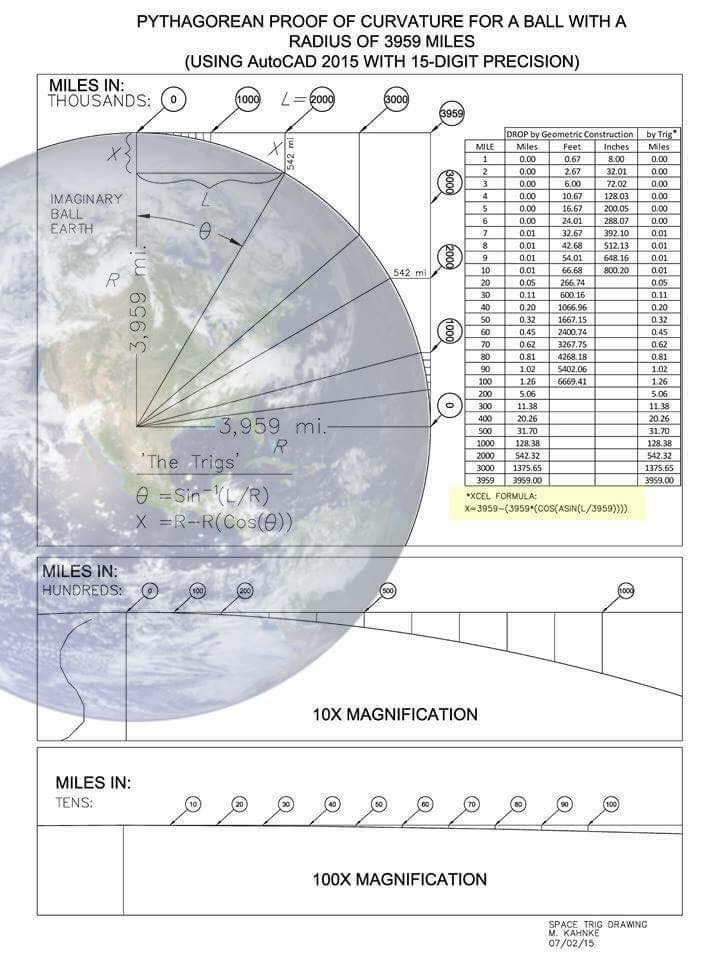I wanted to save a response to this part of your response for it's own post. This is one thing that is observable and makes me seriously question the globe earth. From what I have researched, the earth is either flat or a way bigger than we have been told.
There are many examples of people seeing things that should be below the curve of the earth. It is an observable test that you can do for yourself, if you dare. Some have used Lazar beams and the results are disturbing for a globe believer, like myself.
To answer your question about looking from North America to Africa, I don't know why someone doesn't try this. What would be really nice is if NASA would turn the HUBBLE space telescope around and give us a true pic of our earth, instead of presenting composite fabricated CGI pictures of earth. (They admit that they are CGI, so don't tell me I'm in error. They said so themselves at NASA)
Anyway....
Let's look into this. From this link:
https://aplanetruth.info/2015/03/29/22-is-the-earth-a-sphere-lighthouses-and-distant-lands/
we get these facts. How can this be, on a globe?
“The distance at which lights can be seen at sea entirely disposes of the idea that we are living on a huge ball.” -Thomas Winship, “Zetetic Cosmogeny” (58)
The Isle of Wight lighthouse in England is 180 feet high and can be seen up to 42 miles away, a distance at which modern astronomers say the light should fall 996 feet below line of sight.
The Cape L’Agulhas lighthouse in South Africa is 33 feet high, 238 feet above sea level, and can be seen for over 50 miles. If the world was a globe, this light would fall 1,400 feet below an observer’s line of sight!
The Statue of Liberty in New York stands 326 feet above sea level and on a clear day can be seen as far as 60 miles away. If the Earth was a globe, that would put Lady Liberty at an impossible 2,074 feet below the horizon!
The lighthouse at Port Said, Egypt, at an elevation of only 60 feet has been seen an astonishing 58 miles away, where, according to modern astronomy it should be 2,182 feet below the line of sight!
There is the Bedford level experiment shown in this short vid. It is quite famous and I have read about it in different articles.
This vid is from a flat earth guy that set out to prove on way or another. At the 3 minute mark, so you don't waste too much time, it shows mountain peeks that are all at proper heights even though the are up to about 30 miles between them. Things like this really confuse me.
Maybe you have an explanation.
Something is not right here. Like I said, I'm not a flat earther due to questions of my own that I have not got answers for yet. However, there is a reason that this flat earth view is taking off like wild fire. Just the other day, driving home from work, on a lonely country highway in southern Ontario, I saw a sign..... THE EARTH IS FLAT.... go figure.








